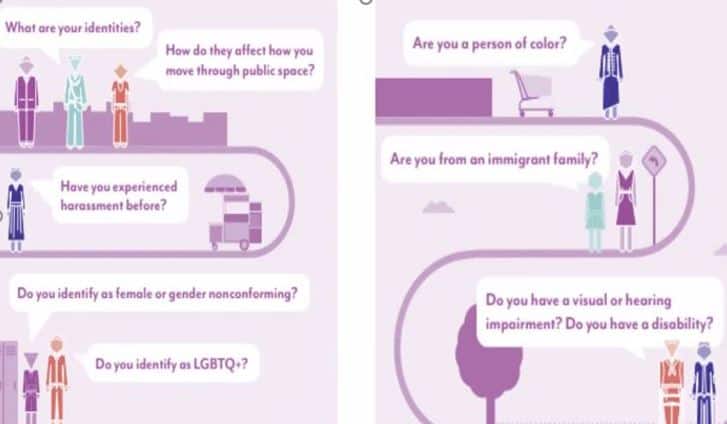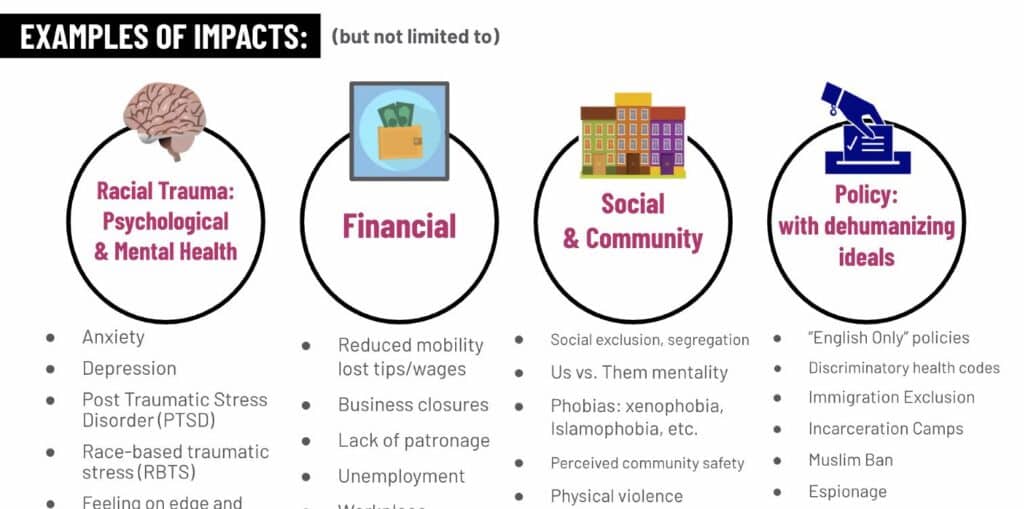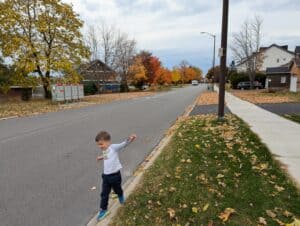Have you ever seen someone being publicly harassed and wanted to intervene but didn’t know how? I have, and for fear of making things worse I did nothing and felt terrible. I also got harassed in a few scary situations and desperately wanted someone to intervene but no one helped. It can’t be like that and I’m glad things are changing. The importance of intervening when someone needs help is clear now. I wanted to learn how to do it right, so today I attended the Bystander Intervention Training offered by the SABA Foundation. The tips were so helpful that I wanted to share them.
The speakers were Sufyan Sohel and Tamer Y. Abouzeid, from CAIR-Chicago, a civil rights organization that works to create equal opportunities and normalize the image of Muslims in America.

Who’s more at risk of harassment
People are harassed because they’re perceived to be of a certain nationality or ethnicity. The consequences are many:

The reasons why bystanders don’t help
Aside from not knowing what to do, I’m often afraid to intervene because I don’t know if the person involved wants help. As it turns out, I’m not the only one – according to the presenters, the main reasons bystanders don’t intervene are:
- Not having enough context
- Fear of making things worse
- No one else is doing anything (the “bystander effect”)
- “I’m a person of colour and I’m afraid it’ll turn on me”
- “I’m white and I don’t want to look like a ‘white saviour'”
- The risk of intervening in online harassment is too high
All of these reasons make sense, but it turns out that people who’re being harassed want help. Presenters showed a study that revealed that 79% of people wanted someone to intervene when they were being harassed, but only 25% were helped.
Bystander Intervention: How to use the 5Ds to stop harassment without putting yourself at risk
The 5Ds stand for Distract, Delegate, Document, Delay, and Direct, and each is a unique approach:
1. Distract
Help with an indirect approach to shift the focus to something else and get the harasser to stop.
For example, if you see someone being harassed on the subway, start a conversation with them to change the focus and ignore the harasser. You can say something like, “Excuse me, do you know which station is closest to X street?” or “Wow, I love your dress! Where did you buy it?”
2. Delegate
Get help from someone else if you don’t feel comfortable intervening yourself – usually from people in a position of authority, such as store managers or teachers.
Think thrice before calling the police, though! They escalate the situation and it often ends badly, especially for visible minorities, undocumented people, and people with language barriers. Always talk to the person being harassed if they want you to call the police.
3. Document
If someone is already helping, you can document the incident so that there’s proof. Film it, take pictures, screenshots, etc. When you’re done, check with the person involved to see what they want to do with it, because it’s not up to you to decide.
4. Delay
After the incident is over, check with the person who experienced the disrespectful behaviour to see how they’re doing and if they need anything.
You can ask, “Do you need anything?”, “Do you want me to walk with you?”, “Do you want me to stay here for a while?” and so on.
5. Direct
Address disrespectful behaviour when it happens. There are three ways to do this:
- Name the behaviour – “That’s racist!”
- Name what you observe – “She looks uncomfortable. Why don’t you leave her alone?”
- Ask a question to give the harasser a chance to understand their unacceptable behaviour and self-correct – “What do you mean when you say ‘Chinese virus’?”
In cases of online harassment, you should only intervene if you know the harasser and feel the platform is safe. The risk of intervening directly on sites like Reddit and Facebook is too high, so it’s always best to inform a moderator.
When deciding on a strategy, always follow the three steps of the Bystander in Action:
- Notice the scenario, access your safety
- Consider your personality and your concerns about intervening
- Decide which of the 5Ds works best at the moment
Once you know the strategies, you can choose the one that better fits your personality, is more appropriate for the moment, and most importantly, is safer for you.
Learn more about bystander intervention
The Bystander Intervention Training was offered in partnership with Hollaback! an organization dedicated to ending all forms of harassment. On their website, you’ll find many helpful resources, including a Bystander Intervention Guide and a Conflict De-Escalation How-to-Guide. And if you’d like to attend a training, there are many dates throughout the year.
It’s also important to encourage others to take action. You can do this by sharing your story as a bystander or as someone who’s been harassed. Hollaback! and Stand Against Hatred are great websites for this.




